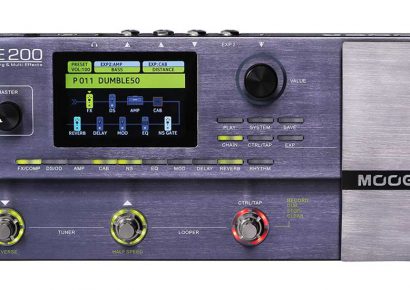The direct drive is essentially a DI box with designs on being a stack, intended first and foremost for live use. Starting with the ¼” input jack you have the option of sending the coloured signal out via a balanced XLR or another ¼” TRS or both. You also have an isolated tuner out and thru-put that sends untouched signal to the aforementioned Tonehenge. On the DI side of things there is an efficient ground lift and polarity switch so you can tune to the PA on the fly, everything you’d expect from the leader of the direct signal pack.
On the right side of the faceplate we stumble upon two modest switches, bright/normal and the three-way amp simulation selector. What Radial have done is mapped out the way an SM57 reacts to signal when it’s squarely in front of a 4×12 half stack, a closed back cabinet and a Fender-esque combo and designed circuitry to match. Here’s where the whole conversation becomes interesting, especially if you’re the one riding faders. One idea of the many offered on the roadmap to be found (and exhausted if you have the time) on the website is to put the Direct Drive at the end of your pedal chain and send clean, thru signal to the amp coupled with the XLR send to you desk. From there, dial in a mixture of stage and direct colours for ultimate tonal control out the front with more than a little bit of character at your disposal. Sounds complicated, but it’s actually a really clever trick that has the potential to turn an average mix into an incredible one.
It’s not an actual difference in tone you’re hearing; it’s essentially the way the circuitry’s harmonics react to the original signal as opposed to a set of ugly roll-offs doing all the work, not unlike changing pickups but without the major surgery. For arguments sake I ran it directly into my amp and the cross section of colours is subtle and satisfying even without doing any of the tricky stuff.
Radial Engineering has positioned itself at the head of the pack of problem solvers for musicians at any stage in their career. The fact that both Kerry King of Slayer and Chick Corea both have their faces on the packaging is testament to the trustworthy and universal nature of their designs. Anywhere there is tone to be chased, anywhere heads are being scratched looking for sonic solutions you bet your bottom dollar these guys have the answer.

